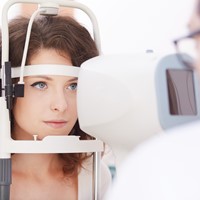Hay Fever (Kafunsho) in Japan

This page contains affiliate links.
Every year, millions of people living in Japan suffer from hay fever caused by pollen. In this article, we will cover hay fever in Japan including its symptoms, this year's pollen forecast, countermeasures, and medications. For severe symptoms or if over-the-counter remedies do not help, it is advisable to consult a doctor at a clinic or hospital.
We have many articles covering healthcare system in Japan including health insurance, health check, where to find OTC medicines, English-speaking pharmacies in Tokyo, and more.
What is Hay Fever (kafunsho / pollen allergy ) ?
Pollenosis (commonly referred to as “hay fever”) is allergic reactions triggered by pollen. The types of pollens that trigger allergic reactions are Japanese cedar, Hinoki cypress, and pine trees pollen. Of these three, the one most people have a reaction to is the Japanese cedar pollen.
What are the Symptoms?
The typical symptoms of hay fever are sneezing, runny nose, nasal congestion, eye irritation.
Why do so many people suffer from hay fever in Japan?
In Japan, many people started to suffer from hay fever due to cedar pollen from around the 1960’s. During that time, the Japanese government ordered a large number of cedar and cypress trees to be planted. Because these trees grow quite fast, the cost for materials for urban development and posts war recovery, from World War II, became more affordable. It is assumed that the significant increase of pollen is due to the vast number of cedar and cypress trees, causing an increase in the number of people who suffer from hay fever.
Hay Fever Season in Japan
Japanese cedar pollen can be found in the air from February through April. During this period, the number of people suffering from hay fever increases drastically. In Japan, it is assumed that approximately 25 million people suffer from hay fever. Sometimes it is said that not one Japanese person doesn’t know someone who is affected by it. During this season the pollen quantity is forecasted everyday along with the weather on TV, in newspapers, and on the internet.
Pollen Dispersal Forecast for 2025

The Japan Weather Association has announced the latest pollen dispersal forecast for 2025 on January 16th. In most areas in Japan, pollen levels are forecasted to be higher than average, except for northern Tohoku, which would experience less pollen.
Cedar pollen dispersion is forecasted to commence in early February in some areas of Kanto and Kyushu Regions in Japan, with more areas starting later. As a matter of fact, some places in Tokai region experienced pollen dispersion in early January. Its peak is expected to occur from late February in Tokyo, Fukuoka, Takamatsu, with more areas such as Sendai, Osaka, Hiroshima, Nagoya, Kanazawa, experiencing it around early-mid March. The peak duration is projected to last for about 10 days to a month.
As per cypress pollen, the peak is likely to occur around late March-early April for approximately 5-14 days. However, there is no clear peak in Sendai, which is also forecasted to have low cypress pollen dispersal.
Protection methods against hay fever
1. Avoid pollen
Avoid going out on the days when more pollen is predicted to be in the air.
Here is a useful link for hay fever conditions and pollen forecast (the location in the link is set for Tokyo, if you live in a different city, ADD LOCATION and check your area): Japan Air Quality & Pollen
2. Prevent exposure to pollen
Glasses (Pollen Guard) : You can find glasses that avoid exposure to pollen.
Masks: You may want to find a high-density mask that fits the contours of your face tightly. The triangular shaped ones might help you breath more easily.
You can find such masks at any pharmacy.
Pollen Blocker Spray: A spray that blocks pollen, PM2.5, and yellow dust with its ion power, and prevents pollen from entering into your eyes, nose and mouth. The effect of using this product can be enhanced by hand-washing, gargling, wearing a mask, and other measures all together.
3. Moderate the symptoms by medication
Medication:
Get prescription medication
Consultation at a hospital:
Many people consult with an ear/nose/throat clinic or just a normal family doctor. Other medical institutions are viable as well such as an ophthalmologist, pediatrician, dermatologist, a clinic for allergies, etc. depending on the symptoms. For a list of English-speaking ophthalmologists in Tokyo, please check here.
If you find you are developing hay fever, it would be wise to take the preventive measures above, or to go see a doctor to get professional advice and medication to help you through this difficult season.
Recommended Over-the-counter medications:
“Allegra” for allergic nasal congestion contains the same ingredients and amount as prescription medication; which you can get without prescription at a pharmacy. It doesn’t cause drowsiness. It is advised to start taking the medicine roughly 2 weeks before pollen dispersal starts.
Ex.) Allegra
Ex.) Aneton Almedi decongestant tablet
These medicines help soothing sneezing and runny nose and decongest developed due to hay fever, house dust, etc.
To learn where to find over the counter medicines in Japan, please check here.
4. The latest medicine for hay fever
XOLAIR Subcutaneous Injection
Since 2020, a treatment option (covered by insurance) involving subcutaneous injection of the anti-IgE antibody (XOLAIR) from February to May has become available for severe and extremely severe cedar pollen allergies.
For individuals experiencing persistent symptoms of rhinitis, such as uncontrollable sneezing, runny nose, and nasal congestion due to cedar pollen allergies, which are not effectively managed with oral medications or nasal sprays, and for those who suffer from pollen allergies throughout the day, or face challenges in changing or increasing medication due to the strong drowsiness associated with oral medications, this treatment offers a valuable consideration with the potential for more powerful effects.
CEDARCURE Japanese Cedar Pollen Sublingual Tablets
CEDARCURE is a medication for allergen immunotherapy in the treatment of cedar pollen allergies, derived from extracts of cedar pollen. By taking small amounts, it helps acclimate the body and alleviate allergy symptoms caused by cedar pollen. It is essential to confirm a diagnosis of cedar pollen allergy before starting the medication. Regardless of the presence of allergy symptoms, it is necessary to take it daily for an extended period. CEDARCURE comes in tablet form, and it is taken by placing the tablet under the tongue, holding it for one minute, and then swallowing.
It is highly recommended that you consult a specialized medical institution for further details about the medicine and the possibility for treatment.
5. Surgery
Some people who do not see enough improvement with medicines, etc., may consider a surgery. There are various surgery methods in Japan including laser treatment. If you would like to consider a surgery, please consult with a medical institution about available methods and further details.
Measures against hay fever
・Do not hang laundry outside (because pollen will be attached)
・Shake off pollen from jackets, hair, etc. before entering the house or office. Do not bring the jacket in to the bedroom or living room because it is likely to have some pollen. Ask other family members and colleagues to do the same. Clothes brushes could be handy to have one.
・Gargle and wash the eyes with eye drops when returning home.
・Clean the A/C filters frequently. To learn how to clean Japanese air conditioner filter, please check here.
・Use a high-spec air cleaner around the desk in the office and use it exclusively.














